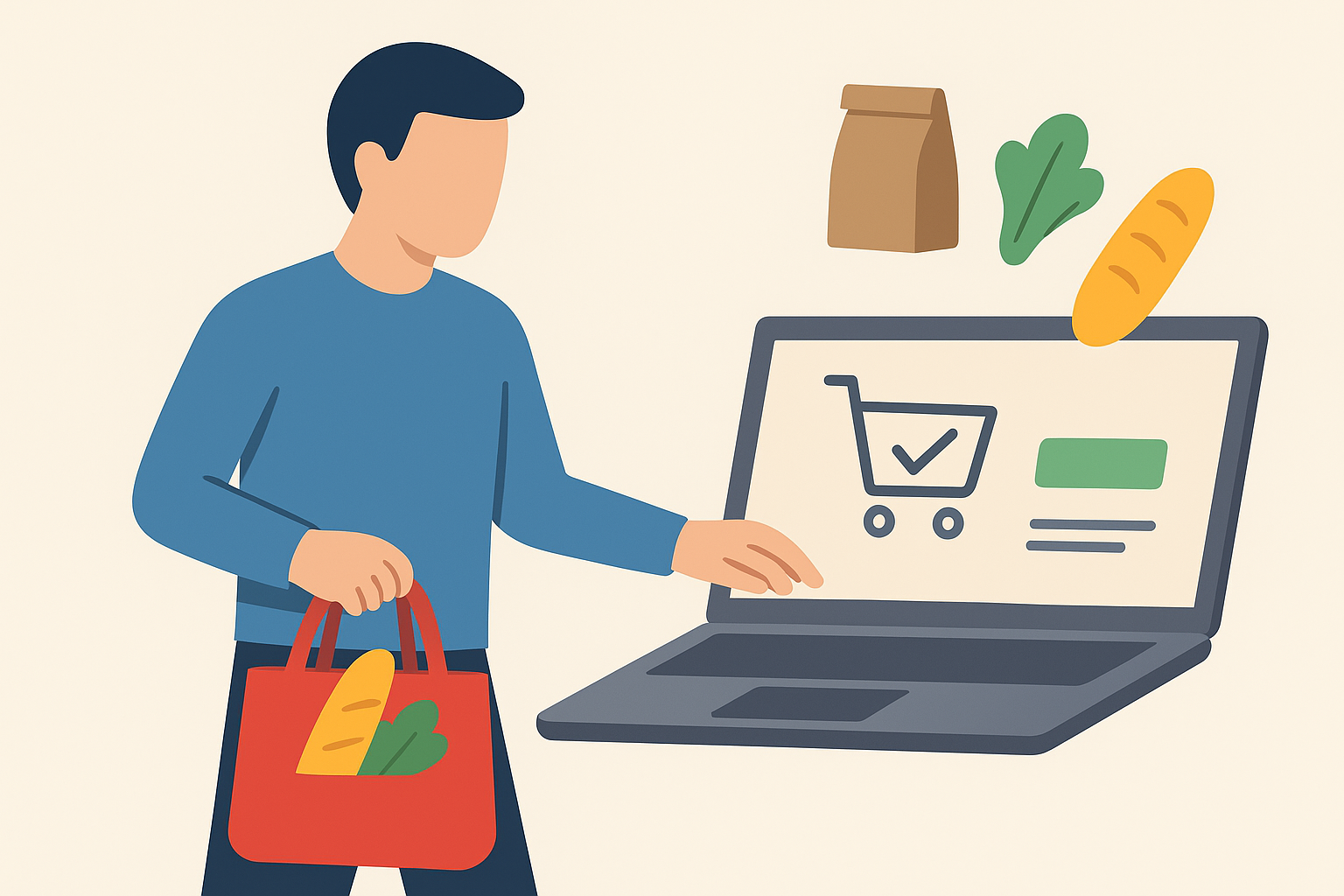Many businesses focus almost exclusively on acquisition, constantly trying to gain new customers, while pushing retention to the sidelines.
Big mistake!
Paid advertising costs are rising and delivering diminishing returns. Not that any business can do without acquiring new customers, but if companies offer products or services that customers can purchase repeatedly, they should dedicate at least as much attention to retention as they do to acquisition.
This is especially true for e-commerce. Smile.io conducted a study analyzing 250,000 e-commerce businesses. The results will probably surprise you: on average, 8% of customers generate more than 41% of total annual revenue!
In light of these statistics, it seems almost absurd how little attention is paid to retention.
What is Retention Marketing?
From everything mentioned above, the essence of retention marketing is probably clear:
Retention marketing is a strategic approach focused on nurturing existing customers. The goal is to keep as many customers as possible for as long as possible, thereby maximizing their lifetime value.
To retain more customers, you need to understand their needs, preferences, and behavior. Based on this data, you then create a specific retention strategy aimed at strengthening loyalty.
But what does a loyal customer actually look like?
Who is a Loyal Customer?
First of all, accept that there's no such thing as a 100% loyal customer who would always buy from you in your industry (e.g., electronics, food service, travel).
Customers are spoiled and fickle. They decide based on what's currently best for them. Nevertheless, we can still generally define a loyal customer.
A loyal customer...
- makes repeat purchases from you
- would recommend (and does recommend) you to others
- doesn't decide based solely on price
Nothing too complicated. A customer doesn't need to love you unconditionally or sing your praises. At minimum, they must be satisfied with your products or services to return. And if you earn their trust, they won't hesitate to recommend you to their friends (which is the best advertising for any business).
Investing in retention marketing will definitely pay off. Yes, most customers will buy once and you'll never see them again. According to Smile.io's research, only 27% return on average after their first purchase.
The good news is that if you manage to encourage a customer to make a second purchase, the probability that they'll buy a third, fourth... maybe even tenth time dramatically increases. In other words, they become a "loyal customer."
The First Experience Decides Everything
There's a reason they say first impressions matter. For customers to buy from you again, they need to have a good experience with their first purchase.
When a potential customer clicks through to your website, how quickly does it load? Can they navigate it easily, or does it seem chaotic? If they complete an order, do you inform them about the order status? Does their package arrive on time? And does the quality of delivered goods match what they expected?
All these individual experiences determine how the customer perceives you. What seems like a small detail at first glance actually has far-reaching impact. Unfortunately, many online stores don't realize this, and instead of addressing individual shortcomings, they increase their paid advertising budget.
Everything starts with the examples above. Many other factors influence the customer experience.
A Customer is Not a Walking Wallet
A customer who feels that a store cares will be much more inclined to return. So how do you prove to them that they're not just a walking wallet to you?
First and foremost, communicate actively. Don't let customer questions and feedback gather dust, whatever they may be. Customers will certainly appreciate when you don't treat their inquiries as a necessary evil. Fast, friendly, and helpful communication—whether by email, phone, or social media—significantly improves the overall impression.
After a customer makes a purchase, inquire about their shopping experience. Give the customer space to express themselves.
An unpleasant but inevitable part of online stores are complaints. However, this is precisely the area where you can differentiate yourself from competitors. Some companies act unpleasantly or even aggressively.
A quick, calm, and accommodating response to a problem can make more of an impression on a customer than the product itself. If a customer sees that you take their problem seriously and are trying to resolve it as best as possible, they'll have a reason to return — perhaps even despite the original complication.
Customer service simply plays a very important role in retention.
Loyal and More Loyal
Now we're getting to the core of retention marketing: how to retain as many customers as possible that you already have in your database?
Start with customer data. Look at what your database looks like. If it's large enough, segment your customers, for example using RFM analysis. This will give you insight into how (un)loyal your customers are.
What next? People often think they should primarily focus on less active customers and gradually "convert" them into loyal ones. But passive customers usually remain passive, or they only react to high discounts.
A complete waste of time is trying to revive "dead souls" — customers who purchased from you long ago but haven't been shopping, visiting your website, or opening emails since.
It's most profitable to focus on currently loyal customers who make repeat purchases, for two reasons:
- Loyal customers can buy even more. Some mistakenly believe that the most loyal customers can't become any more loyal. In reality, they have the greatest potential because they trust you (and maybe even root for you).
- They help us find the key to effective retention. Customers have a reason why they return to you. Investigate what connects them. Examine their purchase history, website behavior, and all interactions.
And how should you communicate with existing customers after purchase?
Email Marketing: The Fundamental Retention Tool
Email is by no means dead. Online stores practically can't do without it because it usually serves as the main channel for communicating with customers.
Even with the first order, emails can evoke positive emotions in customers or, conversely, discourage them.
What email does a customer receive after completing a purchase from you? What do they find in it? Just a summary and a few polite phrases, or an original message that differentiates you from competitors?
Email naturally plays an important role in post-purchase care. Not only should you thank the customer for their order and ask for feedback, but you should also continue communicating with them.
From my experience, even major market players underestimate email communication. They don't utilize automation that responds to customer behavior in real-time, and they send newsletters randomly without strategy.
They don't reflect customers' interests and needs, but rather churn out messages with irrelevant content. They only send information about new products or entice with existing ones (or send discounts), but don't provide any added value in their emails.
Successful email marketing is built on segmentation, personalization, and gradual innovation. Utilize all available data about your customers and continuously improve campaigns based on reports.
You'll earn bonus points with customers and increase the likelihood that they'll buy from you again. Therefore, definitely pay increased attention to email marketing.
Reward Loyalty
If a customer repeatedly purchases from you or uses your services long-term, they subconsciously expect you to notice. And one way to show appreciation is through rewards.
But be careful, the reward alone isn't enough. The customer also needs to know why you're rewarding them. If, for example, you send them a small gift, they won't automatically interpret it as a reward for their loyalty. But when you attach a message explaining all the context, you prove to the customer that you know about them, care about them, and value them.
Loyalty programs form a separate chapter. For loyalty programs to work, boxed solutions usually aren't enough. They should be custom-tailored to each company or online store.
You don't even need to create an official (visible) loyalty program in the form of a club or app that you're trying to lure your customers into. Often a loyalty scheme is sufficient, based on which you customize communication and rewards for individual segments.
We can show gratitude to customers in ways other than just rewards. Involve them. For example, you can create a special offer for your most loyal customers or organize a private event. In your online posts or emails, you can share customer comments or their stories. You can announce contests and polls. Similar activities create a sense of belonging.
Put Yourself in the Customer's Shoes
If I had to summarize all the tips into one, it would be this: imagine you're one of your customers. Would you really like everything? Would you be satisfied with everything, or would something discourage you?
Even this simple method can reveal weak points in your business.

